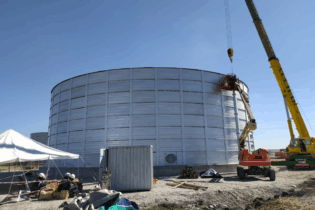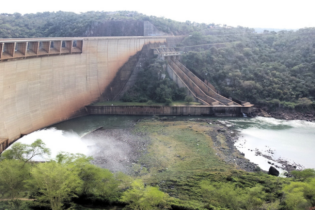With the country’s dams 70,4% full, municipalities have enough water to supply their respective residents without having to cut off supply abruptly to save water.
According to the weekly report by the Department of Water and Sanitation the country has 22 551 cubic metres of water stored in its reservoirs. The volume of water will be enough to sustain the country through the dry winter season until the next summer rains. Only Western Cape is lagging behind at 37,3%, but this is expected to change as soon as the winter rains start coming down at the end of May in the province. The availability of high volumes of water in the hinterland will boost the government’s efforts to fight the spread of the Coronavirus that is wreaking havoc in the country. To stem the tide of the pandemic, the government has asked all South Africans to wash their hands frequently with water and soap. However, some municipalities are allegedly saving water by cutting it supply to residents during the day and only switching it on at night. This has raised the ire of many water users which led to Lindiwe Sisulu, minister of Water and Sanitation condemning the practice. She said the practice smacked of irresponsibility and exposed especially women and children to criminal attacks.“We must all rally around the government’s call to wash our hands frequently in order for us to defeat the scourge of COVID-19,” Minister Sisulu said.
The report indicates Gauteng dams to have risen to 100,5%, followed by Northern Cape and Free State at 98,8% and 83% respectively. In real terms Free State has the largest volumes of water as it boasts some of the biggest dams in the country. There has not been much change in the dam levels in Mpumalanga as they dropped slightly from 75,7 to 75,6% this week. Eastern Cape, which has been plagued by a severe drought, is making steady progress with its dams hovering at 57,4% this week. Before the outbreak of COVID-19, the department worked hard in the province to refurbish dysfunctional boreholes to draw groundwater as an alternative to surface water. North West is virtually out of the woods following the rise of dam levels from 47% in December last year to 70,9% this week. So is Limpopo, whose dam levels soared from below half (50%) three months ago to 68,3% recently. KwaZulu-Natal remains stagnant at 62,7%, although some municipalities in Zululand and UMkhanyakude regions reported rivers thathave dried-up. With the response to COVID-19 at full throttle, government through the DWS, CoGTA,municipalities and the sector broadly will continue to roll out the necessary water tanks and tankers to ensure water availability continues to rise. South Africans must also remember that the country continues to be water scarce; therefore water conservation and demand
management remain top of mind.








